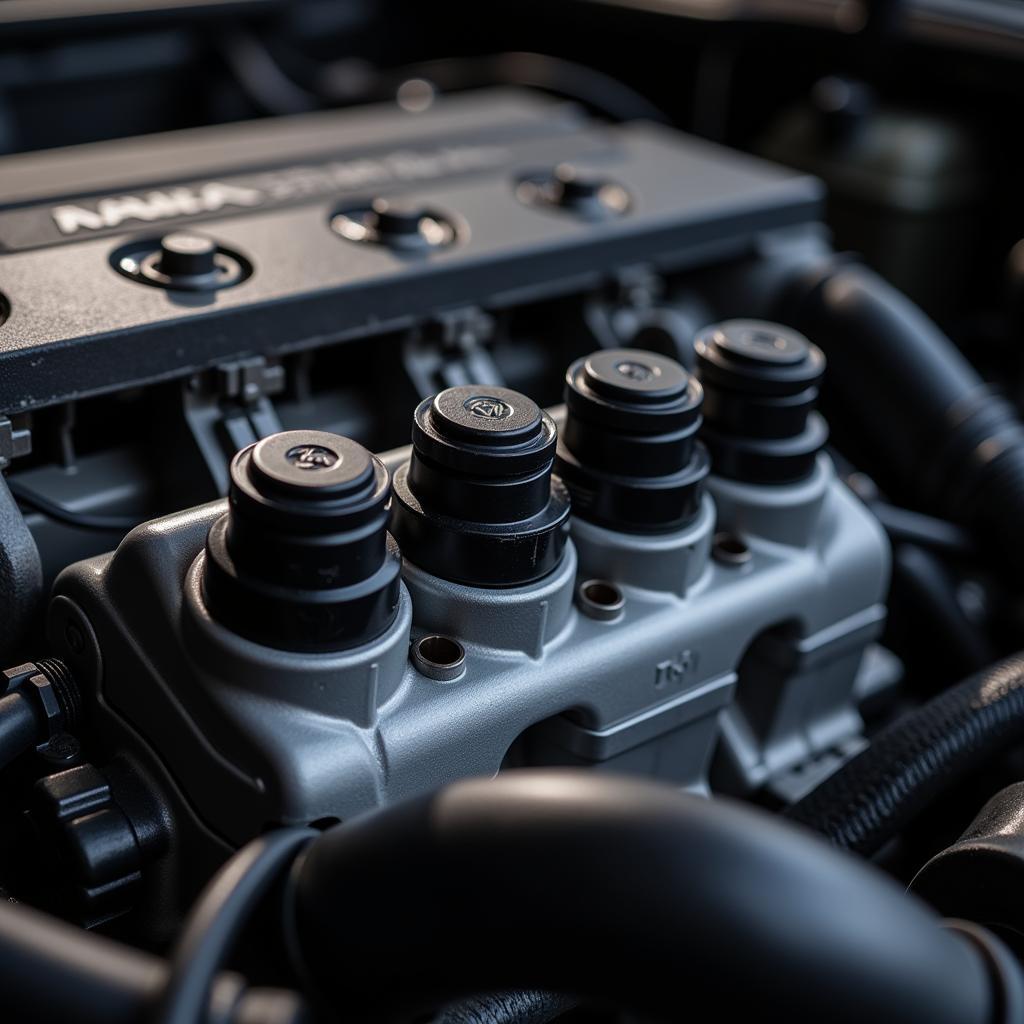Your cart is currently empty!

Understanding TDI VCDS Fuel Trim: A Comprehensive Guide
TDI VCDS fuel trim is a critical aspect of your car’s engine management system, especially for diesel engines. It dictates how much fuel is injected into the cylinders, directly impacting performance, fuel economy, and emissions. Understanding how to read and interpret these values can be incredibly valuable for diagnosing and resolving engine issues.
 TDI Engine Fuel Injectors
TDI Engine Fuel Injectors
What is TDI VCDS Fuel Trim?
In simple terms, fuel trim refers to the adjustments your car’s Engine Control Unit (ECU) makes to the air-fuel ratio to maintain optimal combustion. This ratio is crucial for engine performance and efficiency.
- VCDS (Vag-Com Diagnostic System) is a powerful diagnostic tool used to access and interpret data from your vehicle’s ECU, including fuel trim values.
- TDI (Turbocharged Direct Injection) is a type of diesel engine known for its efficiency and performance. These engines often rely heavily on precise fuel trim adjustments for optimal operation.
There are two primary types of fuel trim:
- Short-Term Fuel Trim: These are real-time adjustments made by the ECU in response to immediate changes in driving conditions, such as acceleration or deceleration.
- Long-Term Fuel Trim: These adjustments reflect the ECU’s learned adaptations over time, based on consistent driving patterns and conditions. They indicate long-term trends in fuel trim.
Why is TDI VCDS Fuel Trim Important?
Fuel trim data provides valuable insights into the health and performance of your TDI engine. By monitoring and analyzing these values, you can identify potential problems such as:
- Vacuum Leaks: Leaks in the intake manifold or other components can disrupt the air-fuel ratio, leading to lean conditions and increased fuel trim values.
- Faulty Oxygen Sensors: Oxygen sensors play a vital role in measuring exhaust gas oxygen content, which the ECU uses to adjust fuel trim. Malfunctioning sensors can provide inaccurate readings, impacting fuel trim.
- Clogged Air Filter: A restricted air filter can limit airflow to the engine, resulting in a rich fuel mixture and negative fuel trim adjustments.
- Failing Fuel Injectors: Leaky or clogged injectors can disrupt fuel delivery, leading to inconsistent air-fuel ratios and fluctuating fuel trim values.
 VCDS Software Interface
VCDS Software Interface
How to Read TDI VCDS Fuel Trim Values
Using a VCDS FTDI cable and software, you can access your car’s fuel trim data. Here’s a basic interpretation:
- Positive Fuel Trim Values: Indicate that the ECU is adding fuel to the mixture to compensate for a lean condition (too much air, not enough fuel).
- Negative Fuel Trim Values: Indicate that the ECU is reducing fuel to compensate for a rich condition (too much fuel, not enough air).
Generally, fuel trim values within +/- 10% are considered normal. Values exceeding this range may suggest an underlying issue requiring further investigation.
Common Causes of TDI VCDS Fuel Trim Issues
Several factors can contribute to fuel trim problems in TDI engines. Here are some of the most common culprits:
- Boost Leaks: Leaks in the intercooler or related hoses can lead to a loss of boost pressure, affecting the air-fuel ratio and triggering fuel trim adjustments.
- MAF Sensor Problems: The Mass Air Flow (MAF) sensor measures the amount of air entering the engine. A dirty or faulty MAF sensor can send incorrect readings to the ECU, impacting fuel trim.
- N75 Valve Malfunction: The N75 valve controls boost pressure. If it’s stuck or malfunctioning, it can cause boost fluctuations and affect fuel trim.
- Exhaust Gas Recirculation (EGR) System Issues: The EGR system recirculates a portion of exhaust gases back into the intake to reduce emissions. A clogged or malfunctioning EGR valve can disrupt this process and affect fuel trim.
Diagnosing and Fixing TDI VCDS Fuel Trim Problems
Addressing fuel trim issues often involves a systematic approach to pinpoint the root cause:
- Check for Error Codes: Begin by scanning your car’s ECU with VCDS for any Diagnostic Trouble Codes (DTCs). These codes can provide valuable clues about potential problems.
- Inspect for Vacuum Leaks: Visually inspect the intake manifold, vacuum hoses, and related components for any signs of leaks or cracks.
- Clean or Replace the MAF Sensor: A dirty MAF sensor can often be cleaned with specialized MAF sensor cleaner. If cleaning doesn’t resolve the issue, replacement might be necessary.
- Test the N75 Valve: You can use VCDS to perform output tests on the N75 valve to check for proper operation.
- Inspect and Clean the EGR System: The EGR valve and related components can become clogged with carbon buildup. Cleaning or replacing these parts may be necessary.
 Mechanic Inspecting TDI Engine
Mechanic Inspecting TDI Engine
Expert Insights
“Many TDI owners overlook the importance of regular maintenance for maintaining optimal fuel trim. Simple tasks like replacing the air filter and using high-quality diesel fuel can go a long way in preventing fuel trim issues.” – John Miller, Senior Diesel Mechanic
“When diagnosing fuel trim problems, it’s crucial to consider both short-term and long-term values. Short-term fluctuations are normal, but consistent long-term deviations often point to a more significant problem.” – Sarah Chen, Automotive Engineer
Conclusion
Understanding TDI VCDS fuel trim is crucial for anyone looking to maintain their diesel engine’s performance, fuel efficiency, and longevity. By learning to interpret these values and utilizing the diagnostic power of VCDS, you can identify and address potential problems early on, saving yourself from costly repairs and ensuring your TDI engine runs smoothly for years to come.
Need help diagnosing and resolving your TDI fuel trim issues? Contact us at +1 (641) 206-8880 and our email address: vcdstool@gmail.com or visit our office at 6719 W 70th Ave, Arvada, CO 80003, USA. We’re here to help!
by
Tags:
Leave a Reply